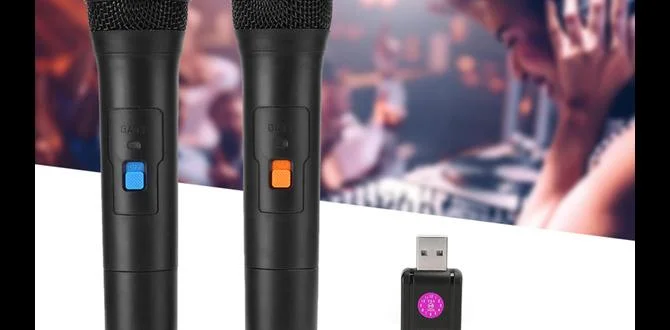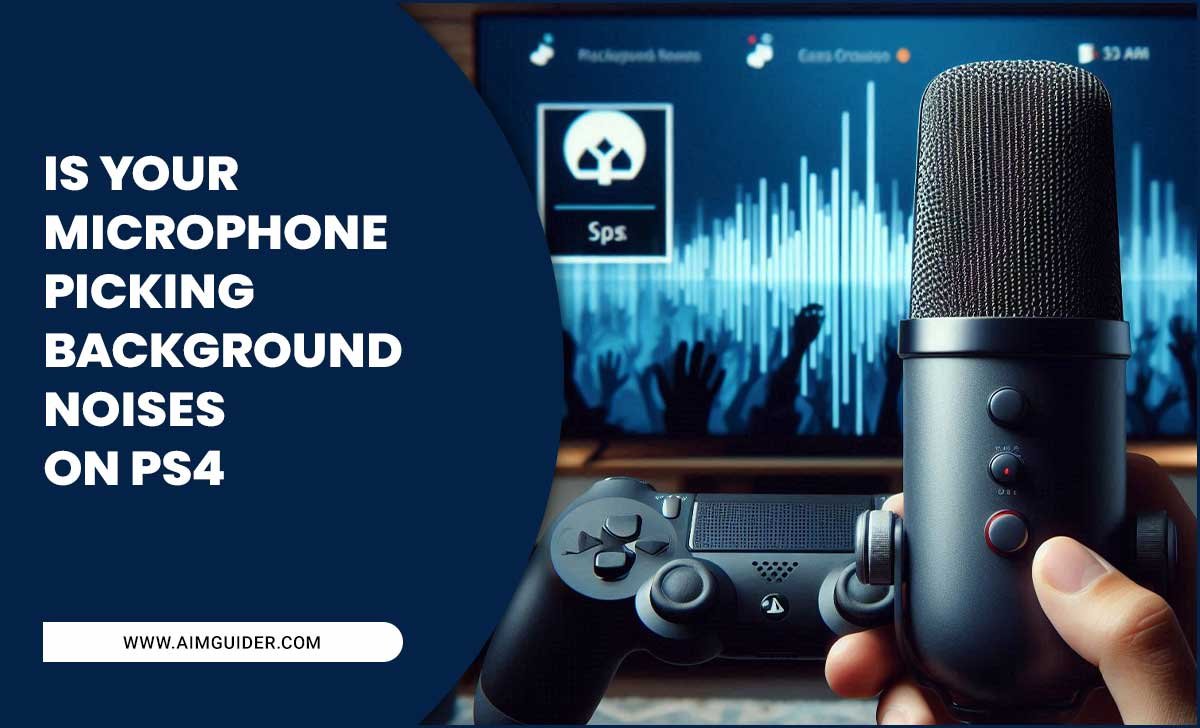Quick Summary: A TV’s refresh rate (measured in Hertz or Hz) tells you how many times per second the image on your screen updates. Higher Hz means smoother motion, crucial for fast-paced action in sports, video games, and fast-cut movies. For under $1000, you can find excellent TVs with refresh rates that will impress.
Ever watched a fast-paced action scene or a crucial moment in a video game, only to see motion blur and juddering that pulls you out of the experience? It’s a common frustration for many of us wanting to get the most out of our home entertainment. The culprit often boils down to something called “refresh rate.” Don’t worry, it’s not as complicated as it sounds! Think of it as the secret sauce for smooth, crisp visuals. This guide will break down exactly what TV refresh rate means, why it matters, and what you should look for when buying a TV, especially when you’re keeping an eye on your budget. By the end, you’ll know exactly what to ask for to get that buttery-smooth picture you deserve without breaking the bank.
What Exactly is TV Refresh Rate?
Imagine your TV screen is like a flipbook. Each page is a still image, and when you flip through them quickly enough, you create the illusion of motion. The refresh rate is how many “pages” or images your TV can show you every single second. It’s measured in Hertz (Hz). So, a 60Hz TV refreshes the image 60 times every second, and a 120Hz TV refreshes it 120 times every second.
Why Does It Matter for Your Viewing Experience?
This is where the magic happens for smooth visuals. A higher refresh rate means more individual images are being displayed per second. This translates to:
- Smoother Motion: Fast-moving objects, like a car chase or a player running across a soccer field, will appear clearer and less blurry.
- Reduced Motion Blur: When an image updates more frequently, there’s less time for your eyes to perceive a smear or trail behind moving objects.
- Better for Gaming: For gamers, a higher refresh rate can mean quicker reaction times and a more immersive experience, as on-screen actions appear more fluid and responsive.
- Less Eye Strain: In some cases, smoother motion can lead to less eye fatigue during long viewing sessions.
Think about it: would you rather have a choppy, juddering video or a smooth, cinematic flow? The refresh rate plays a big role in achieving that latter experience. Getting this right can dramatically improve how you enjoy everything from blockbuster movies to your favorite video games.
Understanding the Numbers: 60Hz vs. 120Hz and Beyond
When you’re shopping for a TV, you’ll most often see two primary refresh rates advertised: 60Hz and 120Hz. Let’s break down what these mean in practical terms.
60Hz Refresh Rate
A 60Hz TV refreshes its image 60 times per second. For most standard TV watching, like news broadcasts, dramas, or sitcoms, 60Hz is perfectly adequate. You’ll still get a good picture, and for the price, it’s often the most budget-friendly option. However, when content gets really fast-paced, like in sports or demanding video games, you might start to notice some limitations. Motion can appear a bit less crisp, and fast-moving objects might have a slight blur.
120Hz Refresh Rate
A 120Hz TV refreshes its image 120 times per second. This is double the rate of a 60Hz TV, and that difference is noticeable. You’ll see significantly smoother motion, less judder, and reduced motion blur. This is especially beneficial for:
- Sports: Watching fast-paced sports like football, basketball, or hockey becomes a much clearer and more engaging experience.
- Action Movies: Intense action sequences with lots of quick camera movements will look much more fluid.
- Video Games: Gamers looking for an edge will appreciate the improved responsiveness and visual clarity that a 120Hz panel can offer, especially when paired with a console capable of outputting higher frame rates, such as the PlayStation 5 or Xbox Series X.
While 120Hz TVs are generally more expensive than their 60Hz counterparts, the performance jump is often worth the investment for many viewers, especially if you prioritize action-packed content or gaming.
Higher Refresh Rates (144Hz, 240Hz)
You might occasionally see TVs advertised with even higher refresh rates, like 144Hz or 240Hz. These are much less common on mainstream TVs and are typically found in premium, ultra-high-end models or gaming monitors. For the vast majority of home users, and certainly for TVs under our $1000 budget, 120Hz is the sweet spot for premium motion performance.
The “Motion Rate” vs. “Refresh Rate” Wild West
Here’s where things can get a little confusing, and manufacturers aren’t always as clear as we’d like. You’ll often see terms like “Motion Rate,” “Motionflow,” “TruMotion,” or “Clear Action.” These are often proprietary marketing terms used by brands. They don’t always represent the actual panel’s refresh rate (the true Hz).
These “motion enhancement” technologies often work by adding extra frames between the existing ones or by dimming the backlight. While they can improve motion, they aren’t the same as a true native refresh rate. When checking a TV’s specs, always look for the “Native Refresh Rate” or simply “Refresh Rate” followed by a number and “Hz.” This is the true capability of the panel itself.
For example, a TV might be advertised as having a “240 Motion Rate.” This doesn’t mean it’s a true 240Hz panel. It’s more likely a 120Hz panel with some form of motion enhancement technology that makes it appear to perform at a higher rate.
What to Look For on the Spec Sheet:
- Native Refresh Rate: This is the panel’s true refresh rate. Look for 60Hz or 120Hz.
- Marketing Terms: Be wary of terms like “Motion Rate,” “Clear Motion,” etc. These are secondary to the native refresh rate.
When in doubt, always look for the number followed by “Hz” and confirm if it’s labeled as “Native.” This is the most reliable way to understand the TV’s actual picture-updating capability.
How Hz Affects Different Content Types
The importance of refresh rate really depends on what you watch or play. Let’s break it down:
Movies and TV Shows
Most movies are filmed at 24 frames per second (fps). Standard TV shows are often shot at 30fps or 60fps. For content filmed at 24fps or 30fps, a 60Hz TV is generally fine. The TV’s processing can often adapt reasonably well. However, for action movies with lots of quick camera movements, a 120Hz TV can still offer a noticeably smoother experience, reducing judder often referred to as the “cinematic look” or “24p judder.” Some TVs have features to specifically handle 24p content better.
Sports Broadcasts
This is where refresh rate shines. Live sports, especially fast-paced ones like soccer, American football, basketball, and hockey, are often broadcast at higher frame rates or involve very quick on-screen action. A 120Hz TV will significantly reduce motion blur and judder, making it easier to follow the ball or players. If you’re a big sports fan, a 120Hz TV is highly recommended.
Video Games
For gamers, refresh rate is crucial. Modern gaming consoles (like the PlayStation 5 and Xbox Series X) and PCs can output games at frame rates exceeding 60fps, often reaching 120fps. To truly benefit from these high frame rates, your TV needs to be able to display them. A 120Hz TV allows for:
- Smoother Gameplay: Actions feel more fluid and responsive.
- Reduced Input Lag: While not solely determined by refresh rate, higher refresh rates often correlate with better gaming performance and less visual delay between your input and what you see on screen.
- Enhanced Clarity: Fast-paced scenes in games are crisper.
For serious gamers, a 120Hz display isn’t just a luxury; it’s a requirement for the best experience. To get the most out of a 120Hz TV for gaming, ensure your gaming device also supports 120Hz output and that the TV has HDMI 2.1 ports, which are essential for these high bandwidth signals.
Best TVs Under $1000 with High Refresh Rates
Finding a great TV with a 120Hz native refresh rate under $1000 is absolutely achievable. While prices fluctuate and sales happen, here’s what you can generally expect and a look at some common categories:
| Refresh Rate | Typical Price Range (under $1000) | Best For | Considerations |
|---|---|---|---|
| 60Hz | $300 – $700 | Casual viewing, general TV watching, budget-conscious buyers | May show motion blur in fast scenes, less ideal for serious gaming or sports. |
| 120Hz (Native) | $600 – $1000+ (often on sale within budget) | Sports, action movies, gamers, those seeking smoother motion | HDMI 2.1 often included on higher-end models, essential for 120fps gaming. |
When looking for a deal, keep an eye on brands known for value in this price bracket like TCL, Hisense, and sometimes entry-level models from Samsung or LG. For example, many of TCL’s R- or Q-series models and Hisense’s U-series TVs often hit the sweet spot of offering 120Hz panels, good picture quality (like QLED or Mini-LED backlighting), and smart features within the $1000 limit, especially during holiday sales or special promotions.
It’s also worth noting that TVs sometimes use “effective” refresh rates. For instance, a 60Hz panel with advanced motion processing might be advertised with an “effective” 120Hz motion rate. Always prioritize the native refresh rate if your focus is on smoothness from the panel itself. You can often find great deals on slightly older, but still very capable, 120Hz models. Check reputable review sites like Rtings.com or Wirecutter for current recommendations that fit your budget and prioritize 120Hz native panels.
Other Factors to Consider for a Great TV Experience
While refresh rate is crucial, especially for motion, it’s just one piece of the puzzle. To ensure you get a TV that truly enhances your viewing, consider these other important aspects:
Resolution (4K, 8K)
Resolution refers to the number of pixels on your screen. Higher resolution means a sharper, more detailed image. Most modern TVs, even budget-friendly ones, are 4K (3840 x 2160 pixels). This is an excellent standard that provides a significant upgrade over 1080p (Full HD). For a TV under $1000, 4K is what you should aim for. 8K TVs are still very expensive and have limited content available, so they are not a practical choice for this budget.
Panel Technology (LED, QLED, OLED)
- LED/LCD: This is the most common type. It uses LEDs to backlight the screen.
- QLED: An enhancement on LED technology, using “quantum dots” to produce more vibrant colors and better brightness. Many excellent QLED TVs fall within our budget.
- OLED: Each pixel lights itself, offering perfect blacks and incredible contrast. While OLEDs are fantastic, they are still generally pricier and harder to find under $1000 for larger screen sizes, though some sales might bring smaller OLEDs into range.
For under $1000, you’ll likely be choosing between a very good LED or a solid QLED TV. Both can offer stunning picture quality.
HDR (High Dynamic Range)
HDR allows for a wider range of colors and better contrast between the brightest and darkest parts of an image. This results in a more lifelike and visually striking picture. Look for TVs that support HDR formats like HDR10 and Dolby Vision. Many TVs in the $600-$1000 range will offer HDR support, significantly boosting picture quality over non-HDR content.
Smart TV Features
Most TVs today are “smart,” meaning they have built-in internet connectivity and operating systems (like Roku TV, Google TV, Fire TV, or proprietary OSs) to access streaming apps like Netflix, Hulu, and Disney+. Consider which smart platform you prefer, as they offer different user interfaces and app selections. Many affordable TVs come with excellent smart platforms built-in.
HDMI Ports and Version
If you plan on connecting multiple devices, like gaming consoles, Blu-ray players, or soundbars, ensure the TV has enough HDMI ports. For next-gen gaming (120fps), you’ll need HDMI 2.1 ports. Most 120Hz TVs in our target price range will include at least one HDMI 2.1 port, but it’s always good to check the specifications.
Setting Up for Success: Ensuring Your Best Picture
Once you’ve picked out your new TV, there are a few simple steps you can take to make sure you’re getting the best performance, especially concerning refresh rate and motion.
1. Check Your Settings
Don’t just plug it in and go! Most TVs come with default settings that prioritize energy saving or a generic picture mode. Dive into the TV’s settings menu:
- Picture Mode: Select a mode like “Movie,” “Cinema,” or “Filmmaker Mode” for the most accurate colors and contrast. Avoid “Vivid” or “Dynamic,” which can over-process the image.
- Motion Smoothing/Interpolation: This is where you’ll fine-tune the refresh rate experience. Features like TruMotion, MotionFlow, or Auto Motion Plus can be turned up or down. For most content, a slightly reduced setting or turning it off entirely can prevent the “soap opera effect” (unnatural smoothness). For sports or gaming, you might want to experiment with higher settings.
- Game Mode: If you’ll be gaming, ensure “Game Mode” is activated. This setting dramatically reduces input lag by bypassing some of the TV’s image processing, letting you enjoy your games more responsively. It often works in conjunction with the panel’s native refresh rate.
2. Use the Right HDMI Cables
For 4K resolution and especially for 120Hz gaming, using an HDMI cable that supports the necessary bandwidth is critical. While many standard HDMI cables might work fine for 60Hz, for 120Hz at 4K, you’ll want to use a “High-Speed” or “Ultra High-Speed” HDMI cable (HDMI 2.0 or HDMI 2.1 specification). These cables are designed to carry the higher volume of data needed without error. They are usually clearly labeled and are readily available.
3. Verify Your Source Device
Your TV can only display what it receives. Ensure your console, streaming device, or Blu-ray player is set to output the highest possible resolution and frame rate your TV can handle. For example, on a PlayStation 5 or Xbox Series X, go into the console’s display settings and select 4K resolution and, if supported by your TV and the game, choose 120Hz output.
4. Update Your TV’s Firmware
Manufacturers often release software updates that can improve performance, add features, and fix bugs. Regularly check your TV’s settings menu for firmware updates and install them. This can sometimes even enhance motion handling or gaming features.




